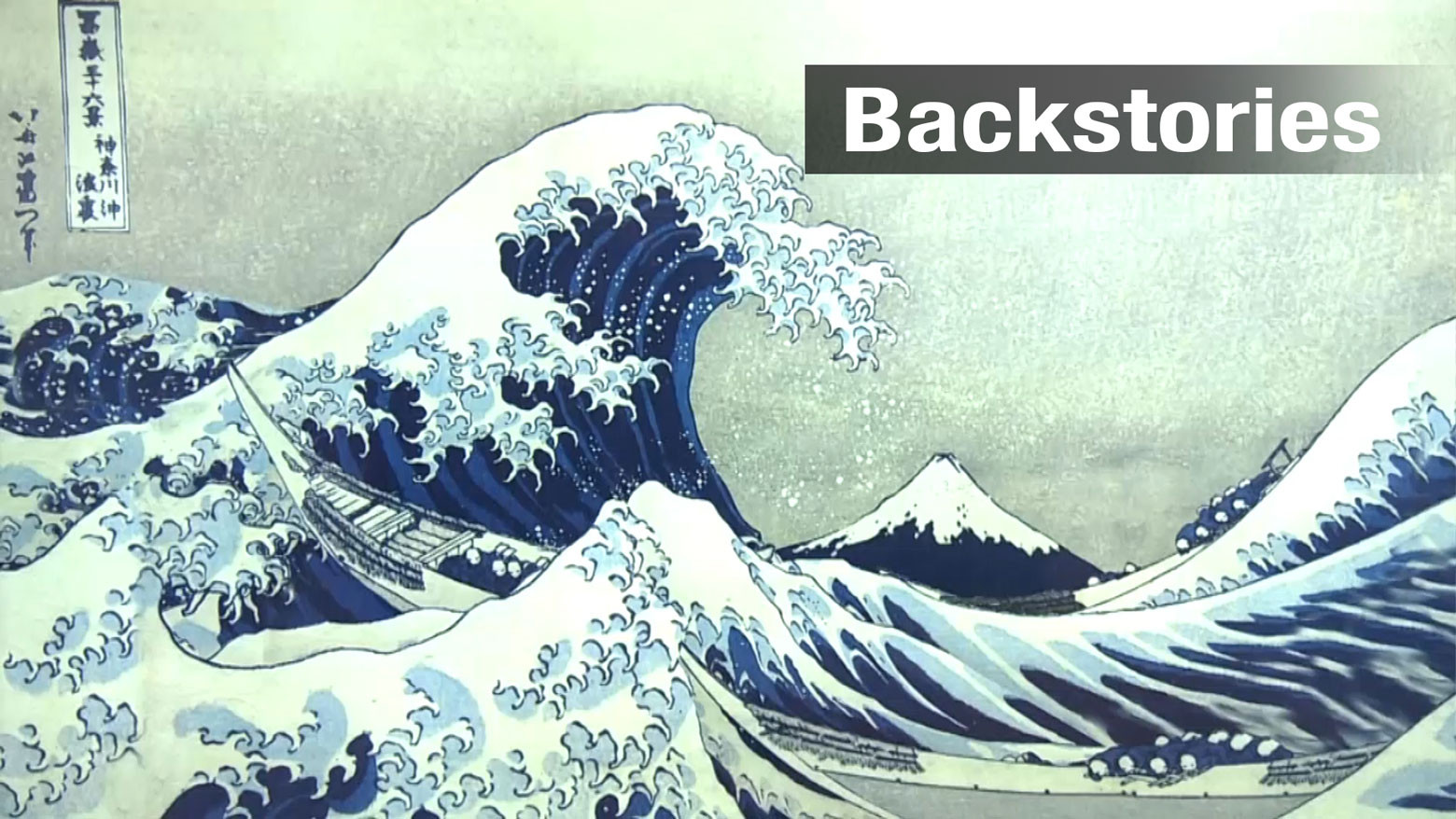Katsushika Hokusai's "Under the Wave off Kanagawa" is one of the most iconic pieces of Japanese art. It is considered an archetype of the "ukiyo-e" style of woodblock prints. But despite being one of the most recognizable works of Japanese art, it is rarely on public display. This is because it is susceptible to damage from ultraviolet rays.
But an exhibit in Tokyo is giving visitors the chance to take pictures of the print, even offering a virtual reality experience of what it would be like to go beneath the waves. This is because what's on display is a digital replica.
The copy was created using technology from Japanese startup Ars Techne・Innovation. It incorporates 2 billion pixels of data from over 30 pictures of the print taken from various angles.
Data of the Hokusai print is stored at a facility owned by a company familiar to most residents of Japan. Nippon Telegraph and Telephone East Corporation, or NTT East, was once a state-run company that managed the majority of the country's fixed-line telephone network. But now the use of these lines has declined to just 30 percent of peak traffic.
Several years ago, as NTT East facilities began to fall into underuse, the company started looking for ways to utilize its space. It came up with the idea of storing "digitalized artwork."
To serve as a storage space for digital art, a facility has to be both spacious and safe. The NTT East buildings, constructed to meet the rigorous safety standards of the country's earthquake code, are perfectly suited to this role.
The images displayed on the digital panels at a Hokusai exhibit in Tokyo automatically change every fifteen seconds based on data sent by NTT East.
NTT East has the ability to safely send huge amounts of data at high speeds. At the Hokusai exhibit in Tokyo, four panels are constantly receiving data on 28 ukiyo-e prints. None of it is saved at the exhibit, which means there is no danger of the facility being hacked and the art being used for other purposes.
Taiga Sakai, a senior manager at NTT East's corporate strategy planning department, says the company plans to help store the digital data of cultural assets throughout the country. He says NTT also hopes to store video data of traditional dances and other cultural practices that have been passed down through generations of rural communities.
The technology has another purpose in addition to preserving art. Digitization of Hokusai's work has given scholars an unprecedented look at his printing technique. The digital replica accentuated details of the print that are difficult for the naked eye to pick up.
Iwao Kubota, president of Ars Techne・Innovation, says his company possesses the technology to create replicas identical to the originals in every way. He says he hopes to help increase the number of works that are being safely stored online.
Technology from companies like NTT East and Ars Techne・Innovation is making it an exciting time for the art world. Curators and scholars now have the ability to store and study works in ways they were never able to before.

